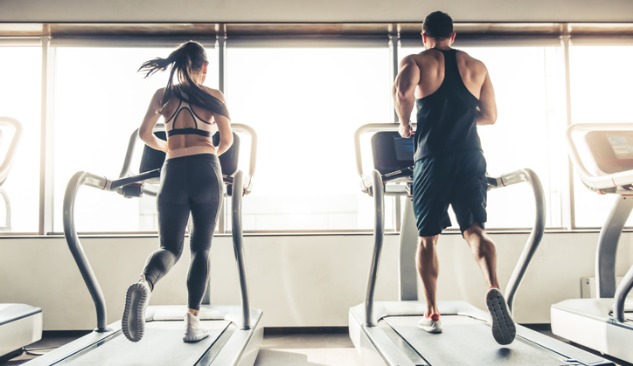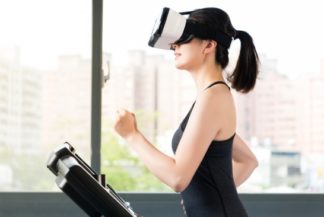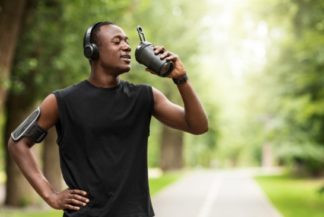Exercises To Boost Metabolism

We have all heard the phrases ‘high metabolism’ or ‘low metabolism’, but what do they mean, and can you change your body’s natural metabolism rate? Your metabolism is how fast your body converts calories into energy. Although everyone is built differently, the more active you are, the higher your metabolic rate will be. There are even a few exercises you can do to boost your metabolism. This TREK blog will tell you everything you need to know about your metabolism, as well as the exercises you can do to boost it!
What is a metabolism?
Metabolism is the process by which your body converts food into energy. It’s what allows you to breathe, think, sleep and even digest your food.
A high metabolism is the ability to burn calories at a fast rate. This can be advantageous if you’re trying to lose weight, but can also lead to problems like fatigue if it’s too high. A low metabolism is the opposite: You’re not burning calories as quickly as you should be. Low metabolism can make weight loss much harder than it needs to be.
The rapid rate at which your body burns calories by breaking down food can be affected by many factors, including:
- Age – As you get older, your metabolism tends to slow down. This is due to a range of factors including being less active and burning less calories. For example, one study found that older adults burnt 29% less calories than the younger participants.
- Gender – Men generally have higher metabolic rates than women because they have more muscle mass, which uses more energy when it contracts and relaxes during exercise. Men also tend to weigh more than women of the same height and age.
- Body composition – Fatty tissue burns fewer calories than other types of tissue in the body because it contains less oxygen and blood vessels than lean muscle tissue does. For example, research suggests that 10 pounds of muscle would burn 50 calories in a day spent at rest, while 10 pounds of fat would burn 20 calories. Therefore, the more muscle tissue you have, the higher the metabolism, and the more calories burned.
Does exercise increase metabolism?
The simple answer is yes. However, the key is choosing the right metabolism boosting exercises. For example, we know that the more lean muscle tissue you have, the more calories you burn daily. Therefore, weight training exercises like deadlifts or squats that focus on compound movements can help you build the right body composition needed for a high metabolism.
Cardio is also key. Exercises like running, jumping and aerobics, (anything that gets the heart pumping), can help boost your metabolism, as well as burn calories. Just remember to have a high protein snack before any high energy workouts. Our TREK protein bars should do just the trick!
Metabolism boosting exercises
The main benefit of these exercises is that they increase the heart rate and make you breathe harder, which means that your body will need to use more energy (calories) to complete them. The more intense the exercise, the greater impact it has on your metabolism. Here are some simple metabolism boosting exercises to help you get started:
- Walking – We take walking for granted as it is one of the best exercises for boosting your metabolism. It’s easy to do, it burns a lot of calories, and is good for your heart and lungs. It’s also an easy exercise to fit around your everyday life. Try going for a walk at lunchtime, or walking to the shops instead of taking the car. Then you can slowly begin to increase the amount of time you get your legs moving!
- Swimming – A great full body workout! Swimming works both the arms and legs so is great for strengthening muscle groups while burning fat at the same time! Swimming also improves cardiovascular fitness which helps boost metabolism over time.
- High knees – This is a great exercise because it gets your heart rate up quickly and burns lots of calories during the course of the workout. It takes only 10 minutes to do 100 high knees (depending on your fitness level), which will help you burn those calories!
- Push-ups – A great way to strengthen your arms, chest and back muscles while burning lots of calories at the same time! They’re easy to do anywhere and don’t require any equipment at all! They can also be adjusted to your difficulty level. If you are a beginner, try a table top push up using your knees, then progress to the full exercise.
- Spin Class – Cycling is great for boosting metabolism, and a spin class can help take this to the next level. It’s a great low impact cardio workout that can help strengthen your leg muscles whilst boosting your mood and improving your stamina!
- HIIT – Interval training alternates between high-intensity exercises with short periods of rest in between. For example, you could alternate sprinting with walking or jogging. HIIT is similar to steady-state cardio but involves short bursts of intense activity followed by periods of rest or low-intensity activity.
- Squats – Another great exercise for improving your overall fitness level. Squatting works the entire leg and buttock muscle groups and helps to strengthen your lower back, hamstrings and calves.
- Dancing – Sometimes working out is the most fun when it doesn’t feel like exercise! Dancing is a great way to burn calories whilst having a good time. It can help improve your muscle tone and strength, whilst boosting your cardiovascular health.
There we have it – everything you need to know about boosting your metabolism! From the exercises you can add to your workout routine, to the reasons why your metabolism may be slightly lower or higher. One thing is for sure, you are now equipped with everything you need to improve your metabolism and see the results you want!
For more TREK blogs on all things exercise, read our other articles on How To Get Motivated For The Gym, and Rugby Drill Workouts. Or for a great workout snack try one of our TREK protein bars.
Ready to try great-tasting TREK protein bars? You can buy them here now!





